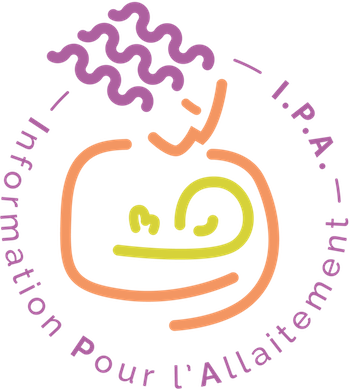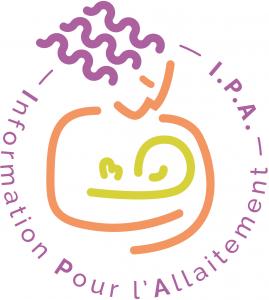Catégories
Documents disponibles dans cette catégorie (18)
 Ajouter le résultat dans votre panier Faire une suggestion Affiner la recherche
Ajouter le résultat dans votre panier Faire une suggestion Affiner la rechercheBulletin : texte imprimé
Les Dossiers de l'Allaitement, n°157 - Avril 2020
La Leche league France, Auteur | 2020SOMMAIRE : Cas cliniques 1 Allaitement par une mère ayant des antécédents de maladie de Basedow 1 Allaitement avant et après une lésion médullaire ayant induit une tétraplégie 2 Candidose mammaire 3 Traitement d’une fistule lactée avec pr[...]Article : texte imprimé
Pankaj Mahipatrao Kaingade, Auteur ; Indumathi Somasundaram, Auteur ; Amar Babaso Nikam, Auteur |Introduction: Human breastmilk is a dynamic, multifaceted biological fluid containing nutrients, bioactive substances, and growth factors. It is effective in supporting growth and development of an infant. As breastmilk has been found to possess[...]Article : texte imprimé
Pankaj Kaingade, Auteur ; Indumathi Somasundaram, Auteur ; Akshita Sharma, Auteur |Purpose and Study Objective: Whether the preterm mothers' mature milk retains the same cellular components as those in colostrum including stem-like cell, cell adhesion molecules, and immune cells. Participants: A total of five preterm mother[...]Article : texte imprimé
Shujuan Li, Auteur ; Lan Zhang, Auteur ; Qi Zhou, Auteur ; Siyuan Jiang, Auteur ; Yi Yang, Auteur ; Yun Cao, Auteur |Background: Human milk is known to be rich in cellular components, including stem cells and immune cells. However, the dynamics of these cellular components at different lactation stages, and the differences between milk for preterm and term in[...]Article : texte imprimé
MT Cabezuelo, Auteur ; JD Galley, Auteur ; P. Dong, Auteur ; La Leche League France, Traducteur |Article : texte imprimé
Article : texte imprimé
Recep Bayram, Auteur ; Muhsine Zeynep Yavuz, Auteur ; Bedri Selim Benek, Auteur |Aim: The aims of this study were to investigate the effects of calcium at the same concentration as that found in human milk on the viability, proliferation, and adhesion of MCF-7 human breast ductal carcinoma cells by exposing them to calcium a[...]Article : texte imprimé
Nutkridta Pongsakul, Auteur ; Pasinee Kanaprach, Auteur ; Wararat Chiangjong, Auteur |Background: Infant formulas are produced to resemble human milk (HM) and to provide adequate energy and appropriate nutritional components for suitability of infant growth and development, some of which are customized for specific medical condit[...]Article : texte imprimé
Alan G. Lourenço, Auteur ; Marilena C. Komesu, Auteur ; Geraldo Duarte, Auteur |Background: Chemokine C-C motif ligand 20 (CCL20) is implicated in the formation and function of mucosal lymphoid tissues. Although CCL20 is secreted by many normal human tissues, no studies have evaluated the presence of CCL20 in human milk or [...]Article : texte imprimé
Wenyi Qin, Auteur ; Santanu Dasgupta, Auteur ; John Corradi, Auteur |Background: Pregnancy-associated breast cancers (PABCs), especially those diagnosed after childbirth, are often aggressive, with a poor prognosis. Factors influencing PABC are largely unknown. Micro(mi)RNAs are present in many human body fluids [...]Article : texte imprimé
Thaneswari Juvarajah, Auteur ; Wan Izlina Wan-Ibrahim, Auteur ; Ali Ashrafzadeh, Auteur |Background: Bioactive proteins from milk fat globule membrane (MFGM) play extensive roles in cellular processes and defense mechanisms in infants. The aims of this study were to identify differences in protein compositions in human and caprine M[...]Article : texte imprimé
Jacqueline María Valverde-Villegas, Auteur ; Mélusine Durand, Auteur |Background Stem/progenitor cells have been identified in human milk. However, characterization and percentages of cell subsets in human milk using hematopoietic stem and progenitor cell markers according to the differential expression of CD45, [...]Article : texte imprimé
The conventional model of drug passage into breastmilk states that large molecules such as maternal immunoglobulins can pass into colostrum because spaces between mammary epithelial cells are open. Then, these pores begin to close at the onset o[...]Article : texte imprimé
Background: Studies demonstrate a protective effect of antibodies (Abs) in breast milk (BM) against mother-to-child transmission (MTCT) of human immunodeficiency virus (HIV). Contribution of the BM cellular component has been overlooked. The onl[...]Article : texte imprimé
Eva P. Browne, Auteur ; Signem E. Dinc, Auteur ; Elizabeth C. Punska, Auteur |Background: Breast cancer is the most frequently diagnosed cancer among Turkish women and both the incidence and associated mortality appear to be increasing. Of particular concern is the percentage of young women diagnosed with breast cancer; [...]


















